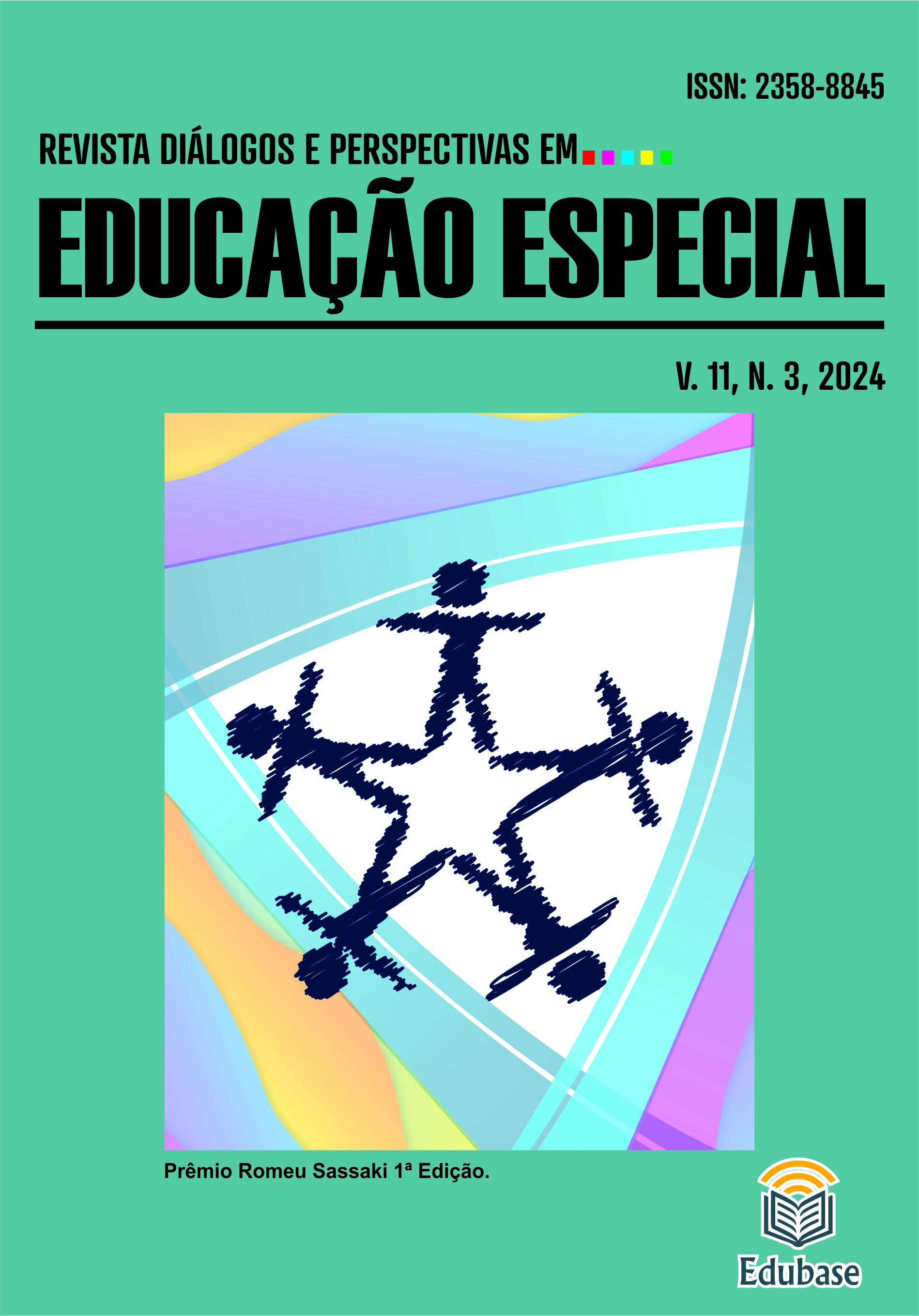DESIGN AND DEVELOPMENT OF A WEB SYSTEM FOR ASSESSING WEBSITE ACCESSIBILITY AND AUTOMATED STAMP GENERATION
DOI:
https://doi.org/10.36311/2358-8845.2024.v11n3.e0240035Keywords:
Special Education , Person with Disability, Digital Accessibility, Assistive Technology.Abstract
Digital accessibility remains a critical challenge for the full inclusion of people with disabilities, especially in a context where technology plays a central role in everyday life. In this sense, a web system, currently in beta version, which assesses the compliance of websites with the accessibility guidelines of the Web Content Accessibility Guidelines (WCAG), was created to act as a digital accessibility monitor. The objective of the system is to ensure that public websites meet accessibility standards and promote digital inclusion. The methodology involved the development of software that performs automated analysis of websites based on WCAG principles: perceivable, operable, understandable and robust. After implementation and rigorous testing, the system began evaluating websites and generating detailed reports on their level of compliance. The results revealed that the majority of sites evaluated are in the 41%-60% accessibility range, with few reaching higher ranges. These findings highlight a critical need for substantial improvements in digital accessibility, pointing to the importance of ongoing monitoring and adoption of best practices to achieve a truly inclusive web. Final considerations highlight the urgent need for corrective actions and the importance of promoting a culture of accessibility, encouraging the implementation of guidelines more broadly and consistently to ensure that all users can access and use the internet fully and effectively.
Downloads
References
BRASIL. Lei n. 13.146, de 6 de julho de 2015. Lei Brasileira de Inclusão da Pessoa com Deficiência . Diário Oficial da União, Brasília, DF, 7 jul. 2015. Disponível em: http://www.planalto.gov.br/ccivil_03/_ato2015-2018/2015/lei/l13146.htm. Acesso em: 10 ago. 2024.
BRASIL. Decreto n. 5.296, de 2 de dezembro de 2004. Diário Oficial da União, Brasília, DF, 3 dez. 2004. Disponível em: http://www.planalto.gov.br/ccivil_03/_ato2004-2006/2004/decreto/d5296.htm. Acesso em: 10 ago. 2024.
BRASIL. Lei n. 10.098, de 19 de dezembro de 2000. Diário Oficial da União, Brasília, DF, 20 dez. 2000. Disponível em:
http://www.planalto.gov.br/ccivil_03/leis/L10098.htm. Acesso em: 10 ago. 2024.
CAPLAN, Graciela J. Accessibilidad en la Red – Red de Interación Especial (RedEspecialWeb). Buenos Aires, Argentina – Julho de 2002. Disponível em: https://z-lib.id/book/accesibilidad-en-la-red. Acesso em: 9 set. 2024.
CIFUENTES, Maria Trinidad Rodríguez. Accesibilidad a la Web de las Personas com Discapacidad Visual. I Congreso Nacional de Nuevas Tecnologias y Necesidades Educativas Especiales, Anais. Murcia – Jul/2000.
DIAS, Cláudia. Usabilidade na WEB. Criando portais mais acessíveis. Rio de Janeiro: Alta Books. 2003. 312 p.
LÉVY, Pierre. O que é virtual? São Paulo: ed. 34, 1996.
LÉVY, Pierre. As árvores de conhecimentos. São Paulo: Escuta, 1995.
MINISTÉRIO DOS DIREITOS HUMANOS E DA CIDADANIA. Brasil tem 18,6
milhões de pessoas com deficiência, indica pesquisa divulgada pelo IBGE e MDHC. Governo Federal, 7 jul. 2023. Disponível em:
https://www.gov.br/mdh/pt-br/assuntos/noticias/2023/julho/brasil-tem-18-6-milhoes-de- pessoas-com-deficiencia-indica-pesquisa-divulgada-pelo-ibge-e-mdhc. Acesso em: Acesso em: 14 abr. 2024.
SONZA, Andréa Poletto. Ambientes Virtuais Acessíveis sob a perspectiva de usuários com limitação visual. Tese (Doutorado). Universidade Federal do Rio Grande do Sul, Programa de Pós-Graduação em Informática na Educação, Porto Alegre, 07 de Maio de 2008. Disponível em: https://drive.google.com/file/d/1P2GpAgxVlm9aGkjyDKwRDEE_DYBst-hd/view.
Acesso em: 9 set. 2024.
SONZA, Andréa Poletto; NASCIMENTO, Gisele Oliveira Fraga do. Possibilidades Acessíveis: recursos de tecnologia assistiva e acessibilidade digital em tempos de pandemia. In: MIORANDO, Tania; CORREA, Aruna (org.) FACOS-UFSM: 2021. Disponível em:
https://repositorio.ufsm.br/bitstream/handle/1/22809/Avaliacao_Aprendizagem_Ensino Remoto.pdf?sequence=1&isAllowed=y. Acesso em: 9 set. 2024.
WORLD WIDE WEB CONSORTIUM (W3C). Web Content Accessibility Guidelines (WCAG) 2.2 - 2023. Disponível em: https://www.w3.org/TR/WCAG22/. Acesso em: 11 ago. 2024.
Downloads
Published
Issue
Section
License
Copyright (c) 2024

This work is licensed under a Creative Commons Attribution 4.0 International License.
- The works published in RDPEE are the sole responsibility of their authors. The authors grant the journal the right of first publication, with the work simultaneously licensed under the Attribution-CC BY, which allows distribution, remixing, adaptation and creation from the work with recognition of the authorship and initial publication in this journal.
- The authors consent that their articles may be incorporated by RDPEE into indexers and databases that currently exist or may exist in the future; the owners of these databases may reproduce, transmit and distribute the texts, in whole or in part, in any form or means of electronic transmission that exists or may be developed in the future.
Qualis Capes (2017-2020)
Education: B1




